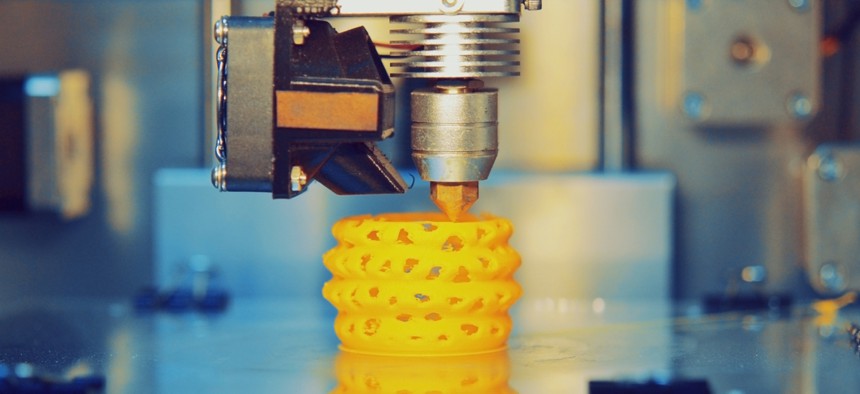VA Seeks to Train Staff to Use 3D Printing to Personalize Care for Patients

MarinaGrigorivna/Shutterstock.com
The agency is actively engaging stakeholders to create new opportunities for training and innovation.
As the Veterans Affairs Department implements disruptive technologies—and specifically 3D printing—insiders are making strategic plans to disseminate modern tools across the agency and build a robust workforce equipped with the skills necessary to reach new advancements on the horizon, Senior Innovation Fellow Beth Ripley said in Washington this week.
“3D printing, in particular, is at a beautiful point for innovation because it is so new to a lot of us,” Ripley said at Nextgov’s Emerging Technology Summit. “Even if we know what it is, it’s full of possibilities and we haven't been indoctrinated into thinking ‘this is how you use it.’”
Ripley also serves as the chair of the Veterans Health Administration’s 3D Printing Advisory Committee. In this capacity, she frequently supports insiders across both agencies as they leverage the new technology to make medical breakthroughs and keep patients and providers increasingly informed in their critical health care decisions.
Through their approach, her team recognizes that the tech is still so new that it holds limitless opportunity.
“Remember, 3D printing was a non-medical tech revolution that’s been put out to the public, so we need to do the hard work of taking a hold of it and really imagine what kinds of problems it could solve,” she said. “And then going through testing them out, seeing if they have merit and value, which will be the first part of innovation, and see if they are feasible.”
As a federal innovator, Ripley has put 3D printing tech to work to transform interactions between healthcare providers and their patients. From printing replicas of patients’ body parts to improve how informed they are ahead of surgeries and regarding their treatments, to custom-printing new braces, devices and hardware for veterans in rural areas who can’t make frequent travel to get the pieces they need, the tech is transforming the agencies’ ability to provide personalized service to veterans.
And looking ahead, Ripley has high hopes to use the technology to actually produce new bones and organs for patients in urgent need.
“So why is VA interested in 3D printing? Again, it gets back to that mission: trying to provide the best services possible to our patients,” she said.
As the 3D tech is still in its earliest stages of medical integration, a present priority for Ripley and her team is to rapidly distribute the printers to frontline staff. She said that instead of having innovation flow only from the top down, it’s imperative for the agencies to get it into the staff that are on the cutting edge of patient care.
“We are trying very deliberately to get 3D printers into as many VA hospitals as possible, into the hands of as many different types of staff as possible, to try to start unlocking these possibilities,” she said.
But as with any new tech, the integration can also pose problems for recruiting and training the federal workforce. Medical 3D printing requires unique skills that unite engineering, anatomy and the capacity to work directly with patients and the clinicians who treat them.
“There are a handful of people out there right now that can do this, but we are now very critically aware of that need,” Ripley said.
To tackle the issue, VA is looking for strategic collaborations with stakeholders in academia, the government and society, to develop new tools and opportunities for training its current and future workforce. She said officials are actively engaging the Defense Department and organizations like the American Society for Mechanical Engineers for insights in this education effort.
“Our goal is in the next few years to come up with an initial curriculum for this, and again, we want to leverage the fact that we are also a large academic training organization with our academic affiliates and have that to lean into,” she said. “So we are working on it.”
Editor's Note: The headline was updated to clarify the agency's focus on training its existing staff and the article was updated to clarify a quote from Ms. Ripley.






